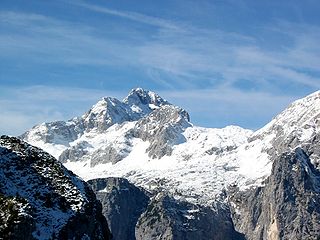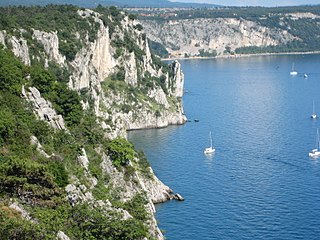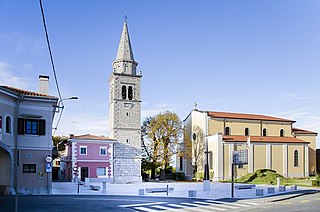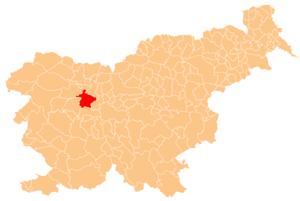
Slovenia offers tourists a wide variety of landscapes: Alpine in the northwest, Mediterranean in the southwest, Pannonian in the northeast, and Dinaric in the southeast. They roughly correspond to the traditional regions of Slovenia, based on the former four Habsburg crown lands. Each offers its own natural, geographic, architectural, and cultural features. Slovenia has mountains, meadows, lakes, caves, and the sea, making it an attractive destination in Europe.

The Lipizzan, or Lipizzaner, is a breed of horse originating from Lipica in Slovenia. Established in 1580, the Lipica stud farm is the world's oldest continuously operating stud farm. It is also closely associated with the Spanish Riding School of Vienna, Austria, where they demonstrate the haute école or "high school" movements of classical dressage, including the highly controlled, stylized jumps and other movements known as the "airs above the ground." The horses at the Spanish Riding School are trained using traditional methods that date back hundreds of years, based on the principles of classical dressage.

The Karst Plateau or the Karst region, also locally called Karst, is a karst plateau region extending across the border of southwestern Slovenia and northeastern Italy.

Lipica is a village in the Municipality of Sežana in the Littoral region of Slovenia, close to the border with Italy. Lipica is one of the main tourist centers of Slovenia's Karst region and it is known for the Lipica Stud Farm, the origin of the Lipizzan horse.

Sežana is a town in the Slovenian Littoral region of Slovenia, near the border with Italy. It is the seat of the Municipality of Sežana. Sežana is located on the Karst Plateau, 17 kilometres from Trieste, Italy, and 80 km (50 mi) from Ljubljana, the capital city of Slovenia.
The White Horses is a 1965 television series co-produced by RTV Ljubljana of Yugoslavia and German TV (Südwestfunk).

Lipik is a town in western Slavonia, in the Požega-Slavonia County of northeastern Croatia.
Avgust Černigoj, also known in Italian as Augusto Cernigoi was a Yugoslav-era Slovenian painter known for his avant-garde experiments in Constructivism.
Gmina Sępopol is an urban-rural gmina in Bartoszyce County, Warmian-Masurian Voivodeship, in northern Poland, on the border with Russia. Its seat is the town of Sępopol, which lies approximately 14 kilometres (9 mi) east of Bartoszyce and 63 km (39 mi) north-east of the regional capital Olsztyn.

Villi Bossi is an Italian sculptor.

Liplje is a small settlement north of Planina in the Municipality of Postojna in the Inner Carniola region of Slovenia.

Prestranek is a settlement south of Postojna in the Inner Carniola region of Slovenia.

Lipica is a village in the administrative district of Gmina Sępopol, within Bartoszyce County, Warmian-Masurian Voivodeship, in northern Poland, close to the border with the Kaliningrad Oblast of Russia. It lies approximately 10 kilometres (6 mi) north-east of Sępopol, 22 km (14 mi) north-east of Bartoszyce, and 73 km (45 mi) north-east of the regional capital Olsztyn.

The Piber Federal Stud is a stud farm dedicated to the breeding of Lipizzan horses, located at the village of Piber, near the town of Köflach in western Styria, Austria. It was founded in 1798, began breeding Lipizzan horses in 1920, and today is the primary breeding farm that produces the stallions used by the Spanish Riding School, where the best stallions of each generation bred at Piber are brought for training and later public performance. One of Piber’s major objectives is "to uphold a substantial part of Austria’s cultural heritage and to preserve one of the best and most beautiful horse breeds in its original form."

Vilenica International Literary Festival is a festival dedicated to literature that was founded in 1986 in Slovenia. It takes place annually in several locations on the Karst Plateau in the Slovene Littoral, including inside Vilenica Cave. It is arranged by the Slovene Writers' Association together with the Cultural Centre Vilenica from Sežana. The highlight of the festival is the awarding of the Vilenica International Literary Prize to a Central European author for "outstanding achievements in the field of literature and essay writing."

The Municipality of Sežana is a municipality in the Littoral region of Slovenia, near the Italian border. The seat of the municipality is the town of Sežana. The municipality was established on 6 November 1994, when the former Municipality of Sežana was dissolved into four smaller municipalities.
Lipica may refer to several places:
Grand Casino Lipica is located in Lipica, Sežana Slovenia, It is owned and operated by Casino Portorož d.d. The casino was renovated in 2016.

The Karst Living Museum is a nature trail in Slovenia. Part of the Karst Plateau, the museum is an ecologically-important area with many karst features. It was recognized as Slovenia's best thematic trail in 2017, and the region is a Natura 2000 site.


















